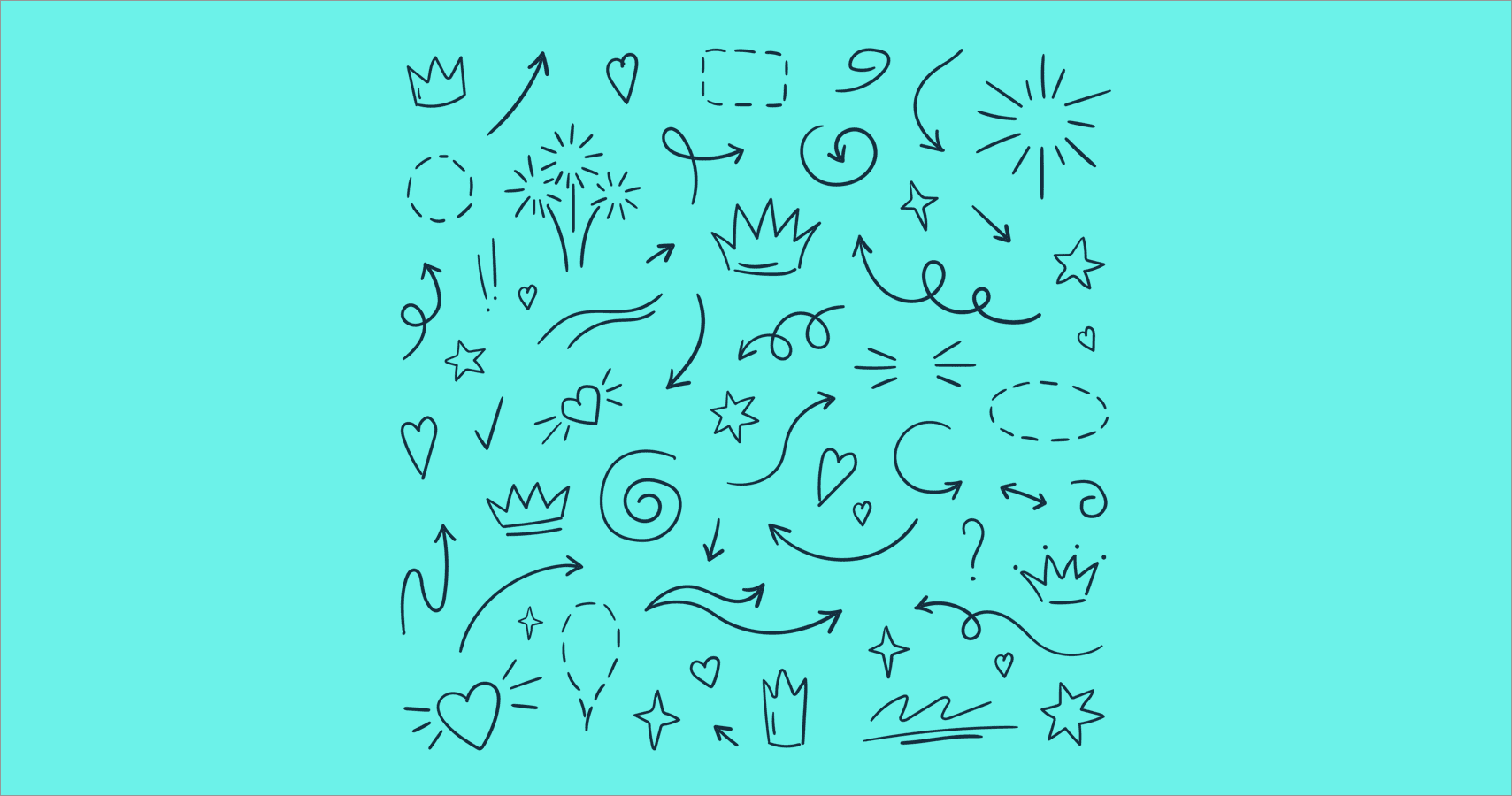It turns out we’ve had doodling all wrong for a long time.
The origin of the word helps explain where the bias started. In the early 17th century, the original word was a noun for a ‘fool.’ Later, it also became a verb in the sense of ‘make a fool of.’
Doodle: from Low German dudeltopf, dudeldopp — ‘simpleton.’
At least today, doodle has earned a slightly higher status in our collective lexicon. Its modern definition: “to scribble absentmindedly.”
Still, doodling carries a negative connotation. Wikipedia’s entry on the topic is a case in point, describing doodles as “drawn by students daydreaming or losing interest during class.”
According to science, it’s almost uncanny how precisely wrong this description is.
The science of doodles and daydreams
In a study published in Applied Cognitive Psychology, participants listened to a 2.5-minute recording that invited them to a birthday party.
In the recording, the speaker weaves in eight place names and eight other party attendees together as she rambles about a sick cat, her kitchen redecoration, and the weather.
Half the participants were given a paper with squares and circles to shade in while they listened. The other half just listened and took notes. On average, the doodlers recalled 29 percent more information than the non-doodlers.
The study’s author, Professor Jackie Andrade’s leading theory for why this happened is that you prevent daydreaming when you doodle.
When your brain is supposedly doing nothing and daydreaming, it’s really doing a tremendous amount.
So, while the popular narrative conflates doodling with daydreaming, the science suggests the former suppresses that activity, allowing the brain to engage in other functions.
Neurologist and professor Marchus Raichle explains why this is so important for your focus:
“When your brain is supposedly doing nothing and daydreaming, it’s really doing a tremendous amount. We call it ‘resting state,’ but the brain isn’t resting at all.”
Daydreaming demands a lot of your attention.
Even more importantly, coloring in the margins of your notepad occupies your mind just enough to stop your mind from wandering. But not so much that you can’t pay attention to your boss’s monologue.
Not just any doodle will do
When she designed her experiment, Andrade didn’t use the word ‘doodle.’ Time Magazine’s John Cloud reports that this was to avoid prompting study participants’ self-consciousness about what constituted an official doodle. Instead, as mentioned, Andrade asked participants to shade in several small circles and squares.
Many people don’t doodle in such a structured way. That’s why researchers Boggs, Cohen, and Marchand built upon Andrade’s research in The Effects of Doodling on Recall Ability.
They found that the unstructured doodlers performed worse than the structured doodlers in the recall task—this cast doubt on the doodle as a focus tool.
But there was a problem with their research.
Boggs, Cohen, and Marchand’s study forced participants to doodle, putting unnatural pressure on what’s meant to be a free-flowing exercise. In a subsequent study in which participants were asked to doodle only if they needed to, the free-form doodlers outperformed the control group.
The takeaway then is not that structured or unstructured doodling that reigns supreme. Instead, it’s that your doodling should be unencumbered and natural.
Look at it as a delicate balance, just slightly occupying your mind enough to stave off boredom but not so much that you’re debating what, how, and when to doodle.
{{vital="/blog-inserts"}}
How to doodle during meetings without coming off rude
The unfortunate reality is that scribbling abstract lines and shapes on paper is generally seen as a sign that you’re not paying attention.
The only way to make sure that your team does not perceive you as rude is by communicating what you’re doing. Be explicit with your colleagues about why you’re doodling—to improve your concentration.
But don’t just tell them you’re paying attention.
Periodically look up from your doodles to make eye contact. Ask questions and offer feedback when asked. Make a point to reference topics they covered to show that you’ve been listening.
It may be a good idea to engage more than you typically would while people adjust to your behavior. Even if they logically understand why you’re doodling, it may take time for them to get over their preconceived notions.
Doodling—not just for meetings
We’ve focused on doodling during meetings because of the mounting evidence that doodling improves focus and concentration, both of which are critical for a productive meeting.
But there’s also a compelling case for the stress-reducing, creativity-enhancing benefits of doodling.
In a study published in The Arts in Psychotherapy, researchers from Drexel found that doodling boosts blood flow in the brain’s frontal cortex—an effect that enhances mood. And there’s plenty of anecdotal evidence from high-performing practitioners.
John F. Kennedy, Franklin D. Roosevelt, and Dwight Eisenhower are among many presidents who have been known to doodle.
Mark Parker, CEO of Nike, doodles in his Moleskine during corporate meetings.
Sunni Brown, Founder of Sunni Brown Ink, a visual thinking consultancy, works with clients like LinkedIn, Zappos, and Dell to “improve organization and planning by using doodles.”
Science makes a strong case—doodling can help you reduce stress and enhance memory, focus, and creativity.
Not bad for what might ultimately amount to a collection of squiggly lines.
Don't let unproductive meetings slow you down
See the impact of fewer, shorter meetings, increased accountability, and enhanced productivity with Fellow.
Get started with Fellow today




